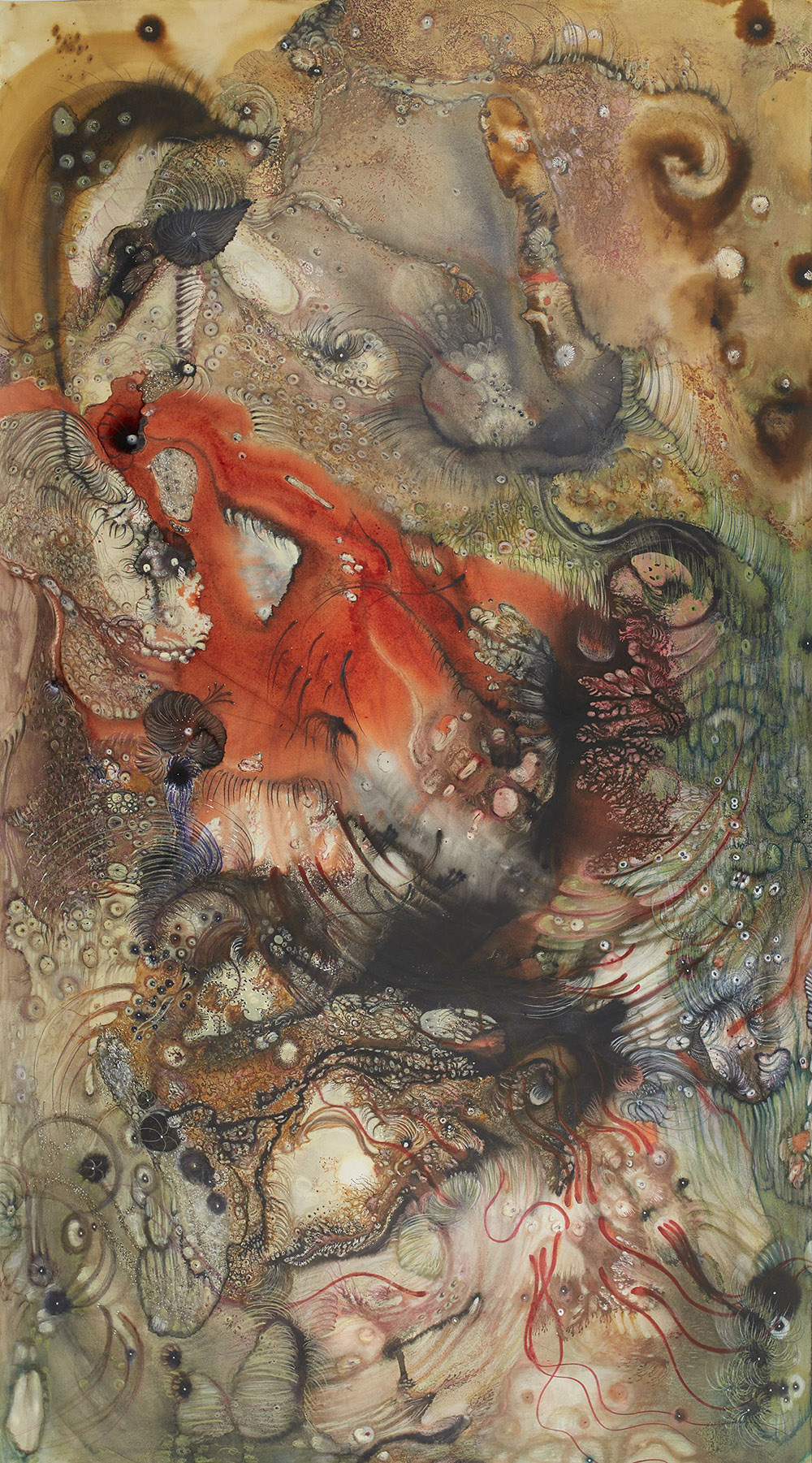Mattias Forshage (text) & Izabella Ortiz (images)
Reinventing Space (Water Memories)
We don’t have a plan, we just open up a rectangle and fit our aquascope there. It only bleeds a little, but the way it reveals a confusing sense of everyday life is not a pedagogic documentary. Izabella Ortiz’s pictures are like the televised images picked up by that planetary probe. But you are already aware it’s not what it looks like. The density of elements in seeming layers within that little rectangular frame keeps reminding you that you do not know on what scale you are entitled to do your central perspective interpretation. Maybe these luscious forests of tendrils really don’t represent anything, maybe they are actually reaching out for you, tickling your face if you still have one.
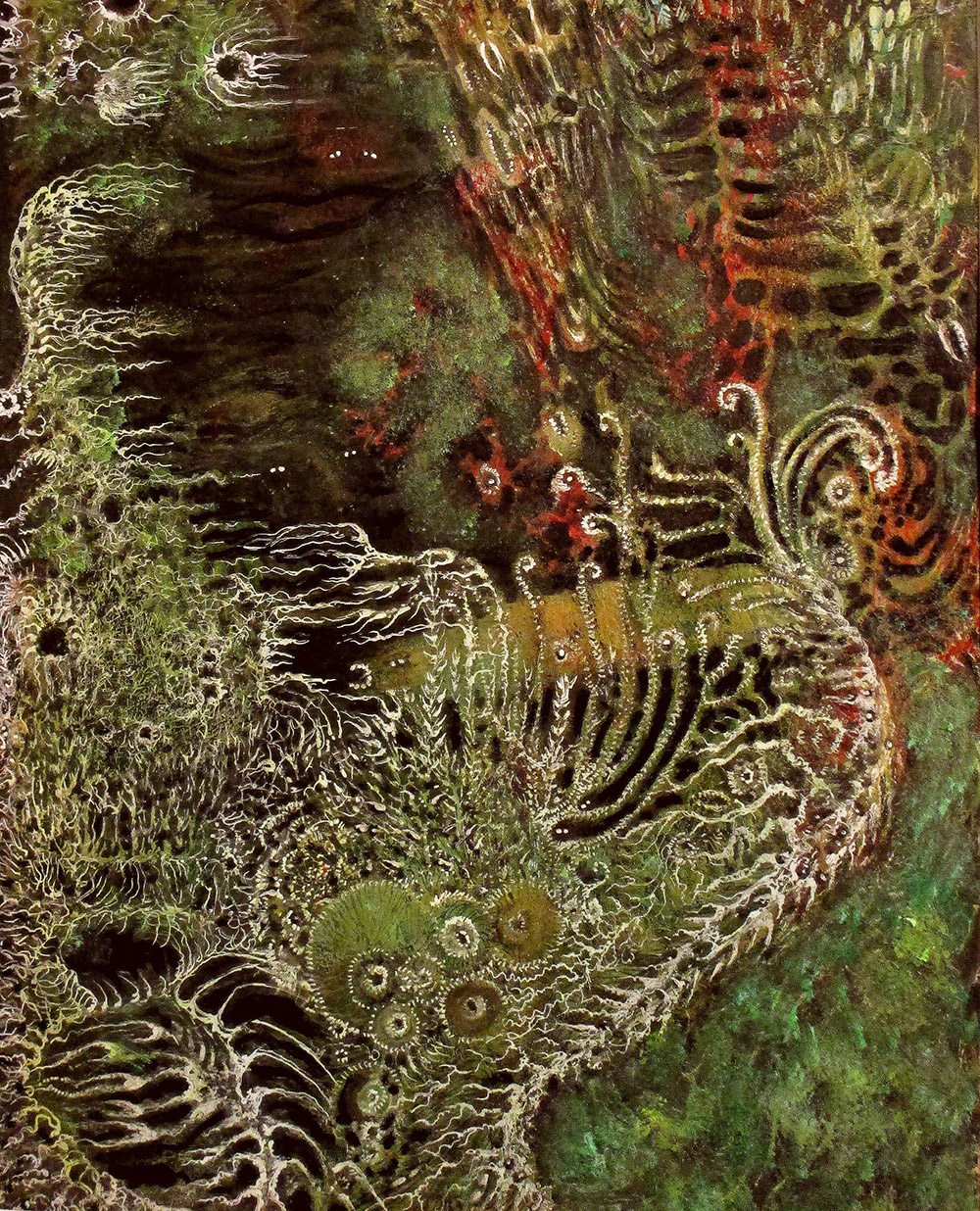
It seems that space is an entity of which there is a scarcity only to the extent one sticks to a particular reference plane and projects multidimensionality as a trompe-l’oeil model. Under the sea, we can largely ignore the reference plane, both that of the bottom and that of the surface, and live in a threedimensional world where every fold multiplies the substrate area, the living surface. Each coral twig is someone else’s trunk. On the other hand it’s not obvious why we’d need the surface at all. We need a surface to look out through. But that’s only as long as we remember where we were sitting when it all started. Once the journey has begun it is easy to forget, because there is always a multitude of possible directions to be vigilant towards. It is easy to forget. None of it will be forgotten. It is not coded in the type of statements that are either remembered or forgotten. We have left a lot behind. This is what travelling might be. The very same fur scalps of deadly tentacles of nettle cells and the spiderwebs of the ever bifurcating arms that provide the grid we are stuck in, bryozoans, feather stars and basket stars, are also the very ladder reaching out in all directions that we slowly and effortlessly keep climbing as if there was a way that was up and not just a multitude of further-ins. And they might not even take us further in. The nature of a journey is such that the threedimensional representation of it is glaringly insufficient in a way which is not even frustrating, it is more like an inconsequential synaesthetic translation, a little melody that keeps us company.
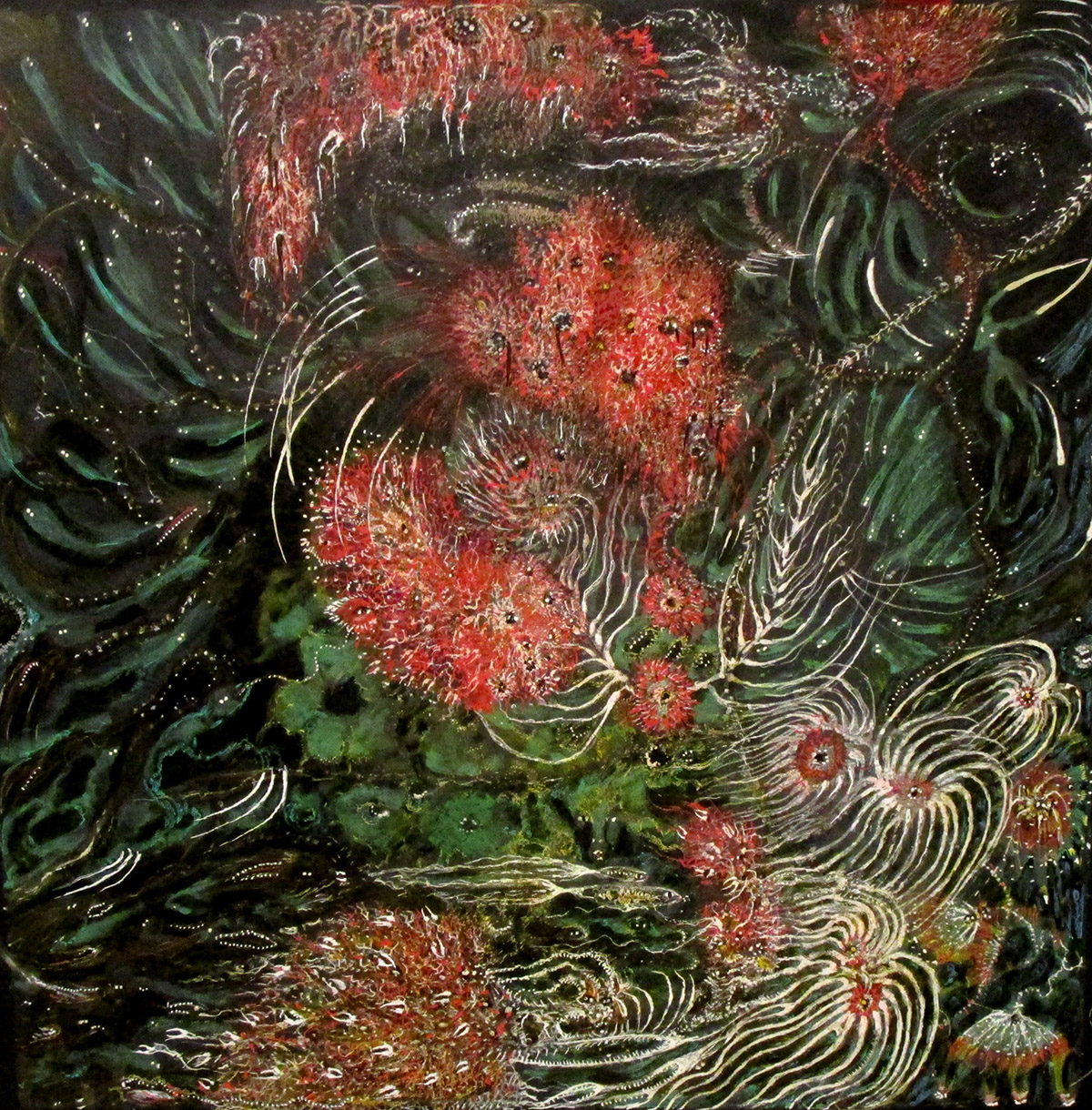
We are no longer under the sea.
First rule is nothing happens.
Someone was squeezing all these skirt folds into a massive vehicle. It was a kite of course, a stag beetle, a flying deer, a manta ray, an indifferently fluttering shortcut across the void.
Someone was waking up the little inhabitants of these innumerable polyps for a kind of interrogation, luring them out just to catch them making an innocent face.
Someone looked into the dazzling fireworks, and someone looked away.

First rule is that there is too much going on, there is a sweet crackling noise flooding the structures and rising as transparent sugary matrix in which it won’t be possible to swim. Because of its strange level of transparence you keep hesitating whether it forms waves slowly rolling back and forth or it was there all the time. One might still press one’s face against this massive living crystal-clear window, transfixed by the teeming. You always expected stone is edible, and you are hungry.
Someone had kept describing it all as peeking with one eye in the microscope and the other eye in the telescope. Suspiciously, the image is fully stereoscopic. Maybe this just suggests that patterns converge on different scales. But there is also the possibility that what we see is simply not visible at all. Like with electron microscopy, it is just a translation into a spatial image of something that can only be approached with other senses. We are seeing the invisible. It is the invisible that is interesting to watch.
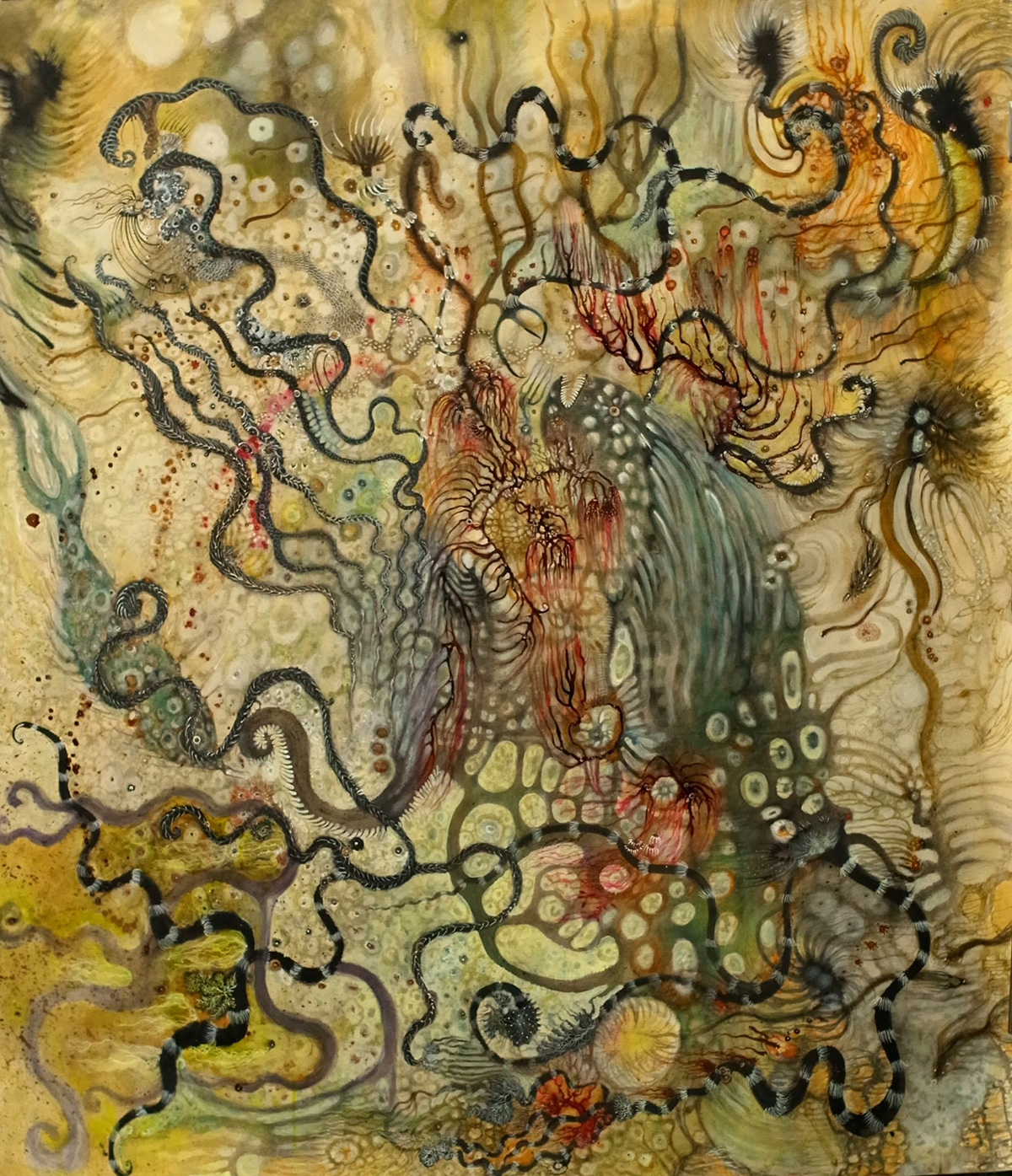
Also, I wonder what exercises made them confident they still had two separate eyes. There are many other organs that are sensitive to light. Image synthesis is based on another class of secrets as well.
An impression of a human face was left in the snow. It will probably not melt away. It is protected like a volcano crater. It might fold in on itself like a sea anemone.
Someone was a new type of eye that traversed the vast canyons and ridges of the sand ripples of someone else’s skin.
Someone was tirelessly trying to draw a map every night. If every dancing gesture made a luminous trace, we could see what had happened. It would become a brittle threedimensional sculpture. Someone even insisted that this was one of the things that dancing was about. And of course most of it is just the fluctuations of the mindlessly passing through, the emergent sign language based in indifference focusedness or unfocusedness on a task, passing through and remaining. There was no one there to read the map. It wasn’t for reading. It melted like candy floss every morning. It was a little thorn crown wearable as a monument of travelling. Sometimes it was possible to find a route through to the mouth, sometimes not.
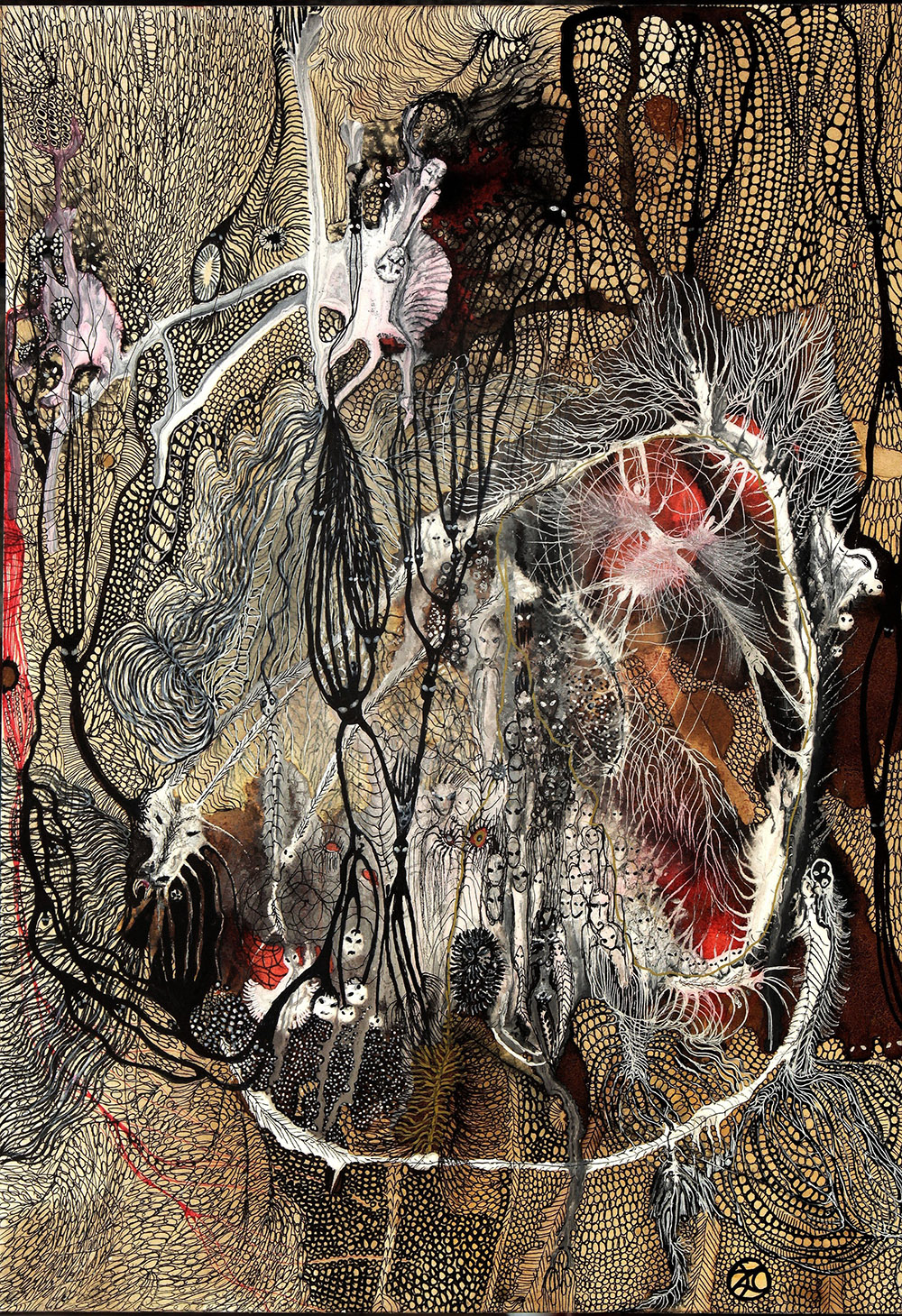
It is strangely familiar what it feels like to be tangled in that tangle, in knots of tentacles which it is impossible to know on a certain level which ones are tentacles of siphonophores with the ominous nettle cells, or sweet algal threads, palpating brittle star arms or sprouting tubeworm tubes, and they may restrain movement to the extent that it seems the tide is going out and one is being left with this heap of camouflaging mess weighing down one’s shoulders and allowing a glimpse into a tangled geometry that was actually going on a completely different scale. It’s like waking up too early. All of it never happened. The only indication that you were on a journey is that you are actually crawling up onto a beach like a monster.

Someone was breaking into the the very geology of the coral reef, with eyes like saucers or wagonwheels or a certain tower strategically placed as if buried in a shallow depression where the interfaces of the collapsing geometries stacked upon one another kept unfolding in a fleshy parody of a caleidoscope.
The eye is all we have left, for everything else is integrated in the movement. This might be travelling. (In might also have been the old principle that we couldn’t conceptualise travelling faster than light. There was just no way of measuring it. It didn’t make sense. It wasn’t a journey. There was no story to tell about it. No sweet dreams to bring to the negotiating table when burying oneself in the sediment. No sweet dreams to look forward to.)
No one remembered travelling. But in this element, this was not an enforced amnesia, there was just nothing to remember, because there was very little else.
